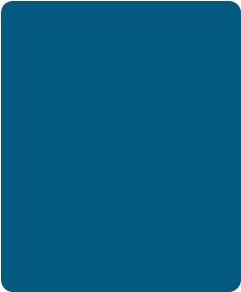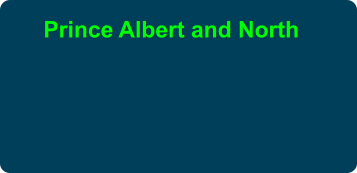

Tyrone Pest Control | 520 Pearson Court | Prince Albert, Saskatchewan | S6V6C6 | Tel: 306 764 4800 Fax 306 764 0057
Made with Xara
Tyrone Pest Control Bed Bug Process
Integrated Pest Management process.
Click here for getting ready info ?
Covid 19 Protocal Guildlines click hereTyrone Pest Control Word Document
Bed Bugs getting ready click here
Tyrone Pest Control PDF File
PDF file Bed Bugs getting ready
What can I do right away before Pest Control arrives. First Step is remain calm, breath and then get to work. The Plan: Get a vacuum and vacuum up all the bed bugs they hide in theSeams, creases, tufts and folds of mattresses and box springs vacuum
the sides, top, underside, and all the other areas the bed frame and head board, Under chairs, couches, beds, dust coversBetween the cushions of couches and chairs Under area rugs and the edges
of carpets Between the folds of curtains In drawers
Next bag up all clothing in dressers wash and dry on high heat for 20min then put in clean bag and keep that way till both treatments are done.SECOND TREATMENT 10 -15 DAYS
Where do bed Bug Hide
Mattress 22% Box spring 34.5% Frame/Headboard 13% Baseboards1.5%
Couch/Chair 22.6% Nightstand /Dresser0.2% Walls/Ceilings 2.3% other
Phone: (306) 764- 4800 Fax: (306) 764-0057
Now your on your way and ready call Tyrone Pest Control 306 764 4800 Read getting ready sheet below.We use safe products with your family in mind.
BED BUG INFESTATIONS METHOD OF INITIAL
INFESTATION
With the widespread use of DDT in the 1940s and
'50s, bedbugs all but disappeared from North America
in the mid-twentieth century. Infestations remained
common in many other parts of the world, however,
and in recent years have begun to rebound in North
America.
People can often acquire bedbugs at hotels, motels,
and bed-and-breakfasts, thanks to increased
domestic and international tourism, and bring them
back to their primary domiciles in their luggage.
There are two ways to get bed bugs - migration and
hitch hiking. Migration is when bed bugs walk to an
adjacent unit through hallways, plumbing, electrical
lines, or other means. Hitch hiking is when bed bugs
climb into or on bags, clothing, or other belongings
and are relocated by a person.
People can often acquire bedbugs at hotels, motels,
and bed-and-breakfasts, thanks to increased
domestic and international tourism, and bring them
back to their primary domiciles in their luggage. They
also can pick them up by adding infested furniture to
their household either via purchase or "Yard sale,
Garage Sales, Used Furniture". If someone is in a
place that is severely infested, bedbugs may actually
try crawlling into anything laying on the floor or
anyone sitting on furniture and be carried by people's
clothing, baby car seats, sleeping bags, pillows, don't
let people bring things into your home.
Finally, it is extremely common for bedbugs to travel
in multi-unit dwellings (such as condominiums and
apartment buildings) from unit to unit, after having
been originally brought into the building by one of
the above techniques.
How do bed bugs get into my home?
Bed bugs are often carried into a home on objects
such as furniture and clothing. If you think you have
a bed bug problem, check for live bed bugs or shells
in the following areas:
Seams, creases, tufts and folds of mattresses and
box springs Cracks in the bed frame and head board,
Under chairs, couches, beds, dust covers
Between the cushions of couches and chairs
Under area rugs and the edges of carpets
Between the folds of curtains In drawers Behind
baseboards, and around window and door casings
Behind electrical plates and under loose wallpaper,
paintings and posters, in cracks in plaster
In telephones, radios, and clocks
Bed bugs can also travel from apartment to
apartment along pipes, electrical wiring and other
openings. If the infestation is heavy, a sweet smell
may be noticed in the room.
What can I do if I have bed bugs in my home?
Inspect your mattress and bed frame, particularly the
folds, crevices and the underside, and other locations
where bed bugs like to hide.
Use a nozzle attachment on the vacuum to capture
the bed bugs and their eggs. Vacuum all crevices on
your mattress, bed frame, baseboards and any
objects close to the bed. It is essential to vacuum
daily and empty the vacuum immediately.
Wash all your linens in the hottest water possible and
place them in a hot dryer for 20 minutes. Consider
covering your pillows and mattress with a plastic
cover.
Remove all unnecessary clutter.
Seal cracks and crevices between baseboards, on
wood bed frames, floors and walls with caulking.
Repair or remove peeling wallpaper, tighten loose
light switch covers, and seal any openings where
pipes, wires or other utilities come into your home
(pay special attention to walls that are shared
between apartments).
Monitor daily by setting out glue boards or sticky
tape (carpet tape works well) to catch the bed bugs.
Closely examine any items that you are bringing into
your home.
Consult professional pest control services and
discuss options that pose the least risk to humans
and the environment.
If you choose to treat the infestation with an
insecticide, call a Tyrone Pest Control Service for
more information. Use the least product available
and follow all manufacturers' instructions.
Whether you choose Integrated Pest Management or
insecticides, you may continue to see some living
bed bugs for up to ten days. This is normal. If you
continue to see a large number of bed bugs after two
weeks, contact a professional pest control service.
More Questions
Can I get sick from bed bugs?
There are no known cases of infectious disease
transmitted by bed bug bites. Most people are not
aware that they have been bitten but some people are
more sensitive to the bite and may have a localized
reaction. Scratching the bitten areas can lead to
infection.
Four types of skin rashes have been described in the
literature:
The most common rash is made up of localized red
and itchy flat lesions. The classical bed bug bites
could be presented in a linear fashion in a group of
three, which is called "breakfast, lunch, and dinner".
Small raised red swelling lesions are also common.
In rare cases, people may develop large raised, often
itchy, red welts.
In people with high sensitivity to bed bug saliva,
people may develop a lump filled with blood or fluid.
Bed bug bites most commonly occur on exposed
areas of the body, including face, neck, hands, arms,
lower legs or all over the body.
How do I treat bed bug bites?
Most bed bug bites go away by themselves and don't
need treatment. Keep the skin clean and try not to
scratch. If the bites are very itchy, your doctor may
prescribe cream or antihistamines to relieve the
itchiness. Oral antibiotics may be prescribed for any
secondary skin infection from excessive scratching.
What does Public Health of Canada recommend
Bed Bug Information for Landlords and Property
Managers Multi-unit dwellings, including hotels,
apartments, hostels, shelters, student residences and
rooming houses, are high-risk locations for bed bug
infestations. The best method to deal with
bed bugs is Integrated Pest Management (IPM), which
combines a variety of techniques and products that
pose the least risk to human health and the
environment. Collaboration between tenants and
landlords is necessary to eliminate bed bug
infestations.
The following steps are recommended for landlords
and property managers dealing with bed bug
infestations:
1. Early detection of bed bug infestation: respond to
tenant’s complaint about bed bugs,
and conduct proper inspections. Consult Toronto
Public Health or professional pest
control services about how to confirm bed bugs
infestations.
2. Control of bed bugs: use a professional pest
control service experienced in bed bug
control and Integrated Pest Management (IPM).
3. Preparation: consult with tenant(s) in bed bug-
affected unit(s) to ensure adequate
preparation steps have been taken to prepare room(s)
prior to treatment
4. Inspection after treatment: ensure an inspection by
either the property
manager/landlord or pest control professional is
carried out following treatment to assess
the treatment’s effectiveness and determine if more
spray is needed. Often more than one
treatment is required.
5. Prevention: seal cracks and crevices between
baseboards, on wood bed frames, floors
and walls with caulking. Repair or remove peeling
wallpaper, tighten loose light switch
covers, and seal any openings where pipes, wires or
other utilities come into the home
(pay special attention to walls that are shared
between apartments).
6. Furniture removal: Furniture put out from the
infested units should be removed as soon
as possible, and dismantled so that it is not picked
up by someone else.
For more information:
• Effective Control of Bed Bugs, Health Canada, Pest
Management Regulatory Agency -
Where do bed Bug Hide
Mattress 22% Box spring 34.5% Frame/Headboard
13% Baseboards1.5% Couch/Chair 22.6% Nightstand
/Dresser0.2% Walls/Ceilings 2.3% other
Keys to getting a successful treatment
You will still see bed bugs as this type of treatment
flushes them out of their hiding spots as well it is a
contact spray which means they must contact it in
order to kill them so don’t panic you will see them for
usually a few days after we spray.
Change the sheets weekly and Vacuum all the beds
(frames, mattress and box springs) as well as the
entire room especially along the edges of the
baseboards, other furniture such as the couches all
the creases and under the pillows on the coaches
and under the coaches chairs and all rooms. This
needs to be done every 5 days till the second
treatment and continue Vacuuming for another 3
weeks.
SECOND TREATMENT 10 -15 DAYS
Where do bed Bug Hide
Mattress 22% Box spring 34.5% Frame/Headboard
13% Baseboards1.5% Couch/Chair 22.6% Nightstand
/Dresser0.2% Walls/Ceilings 2.3% other
Phone: (306) 764- 4800 Fax: (306) 764-0057
Tyrone Pest Control
Professional Pest Control Since 1979

Bed Bugs Signs
what to look for!


When Service Matters Call US
Phone 306 764 4800
Fax 306 764 0057
email: Tyrone@tyronepestcontrol.com
Since 1979 Professional Pest Control


Bed Bug Capture machine for rental

























